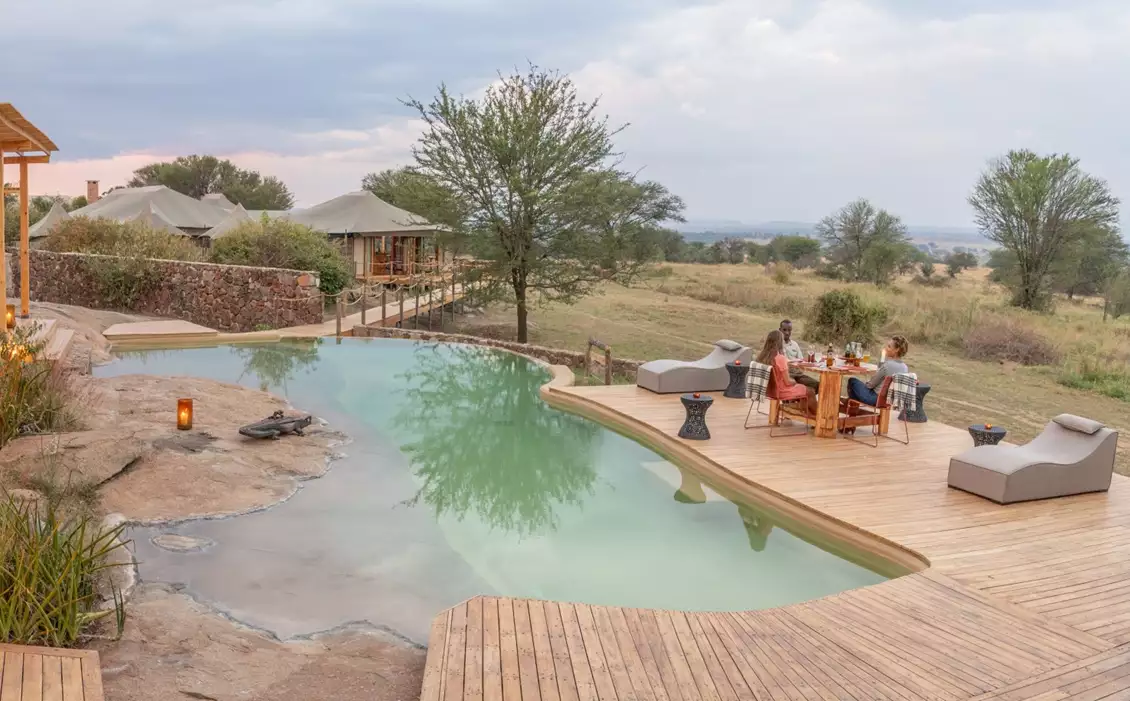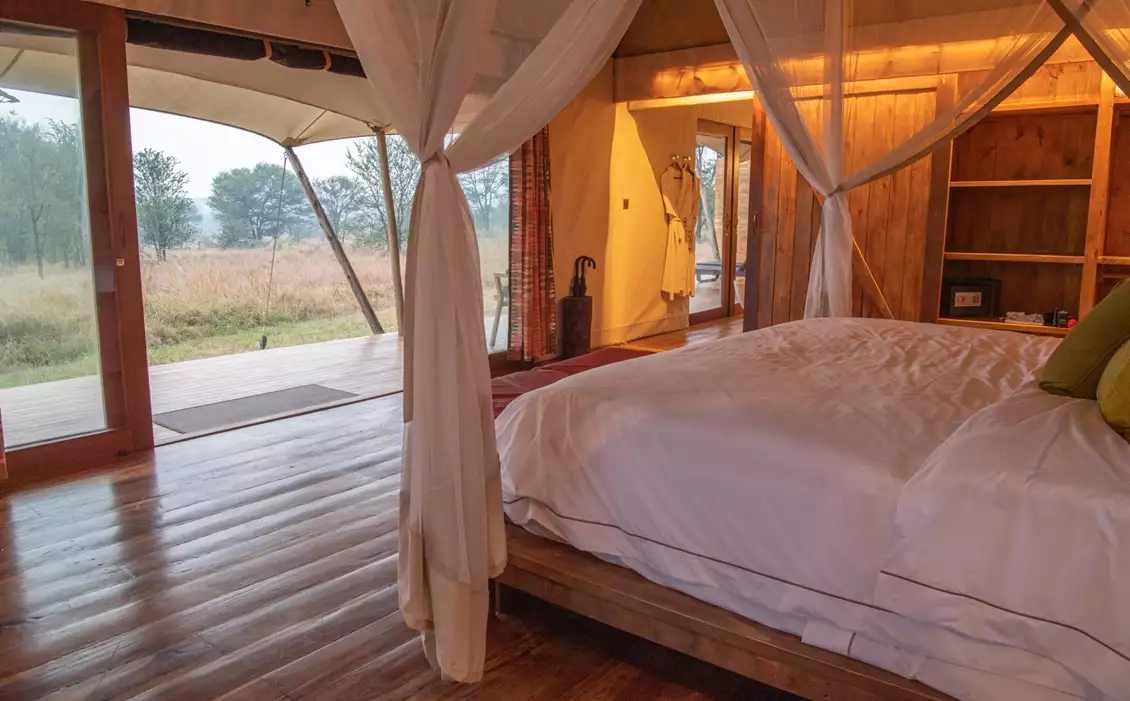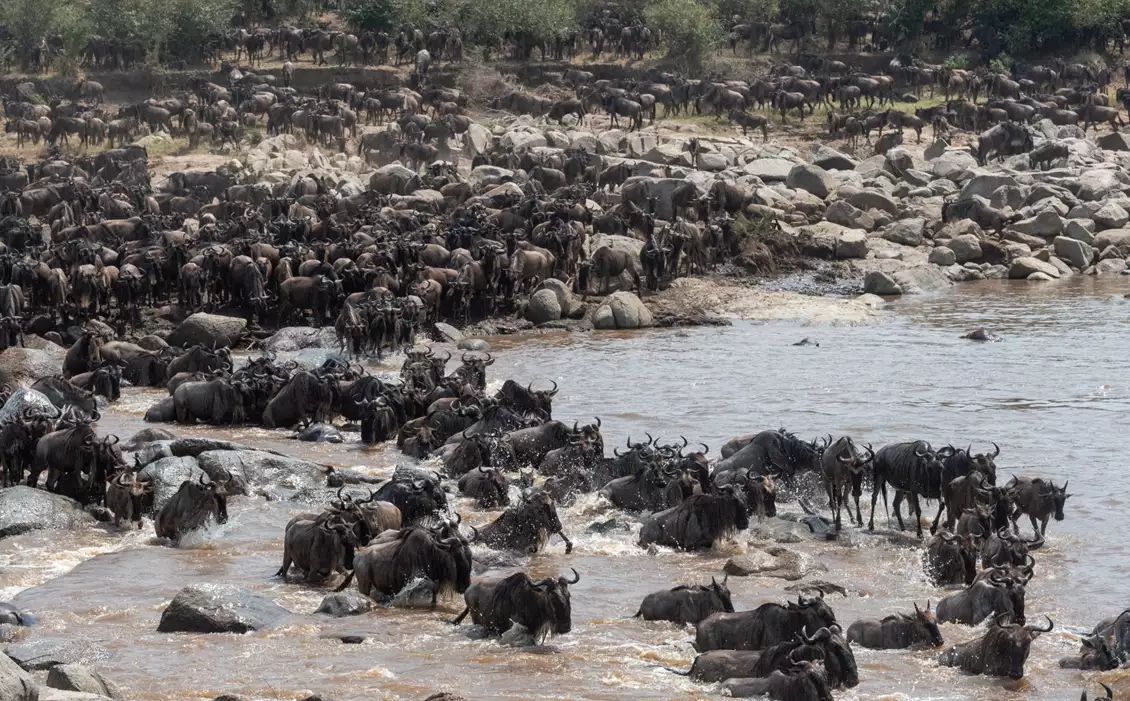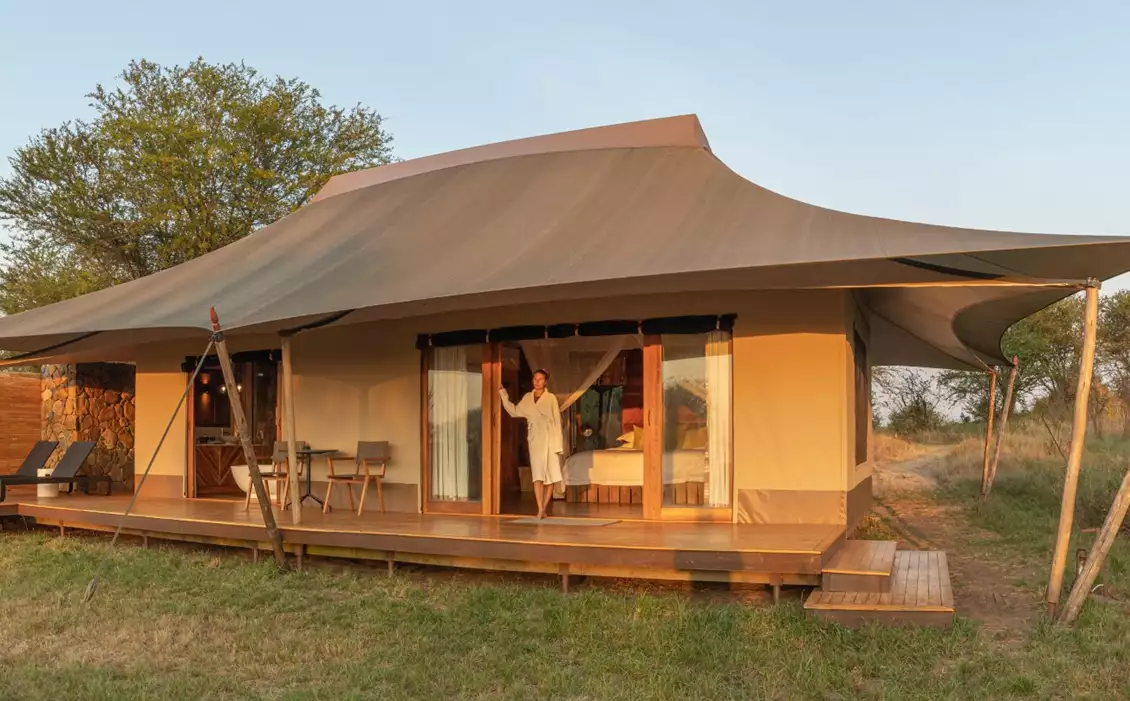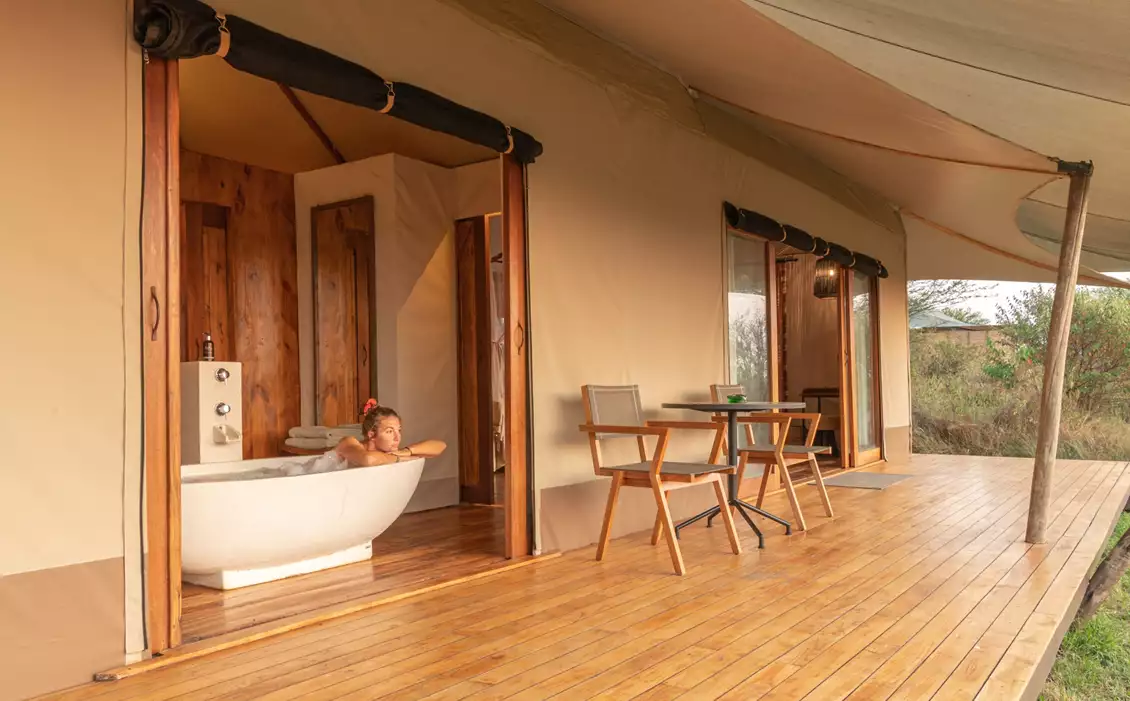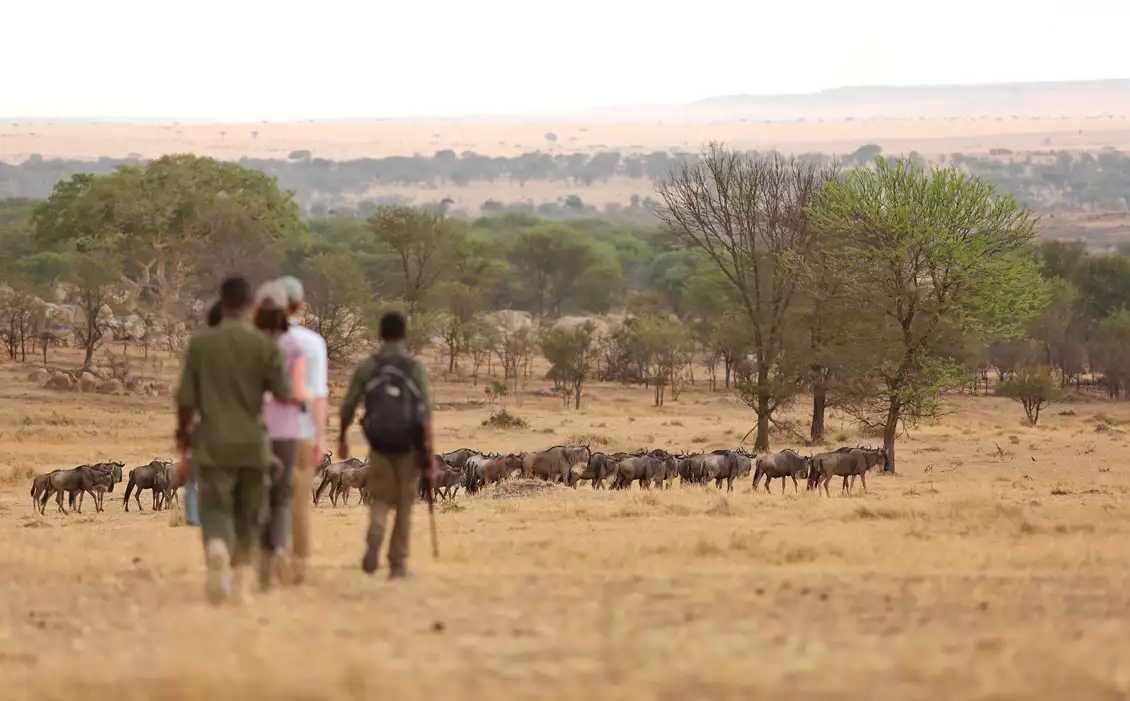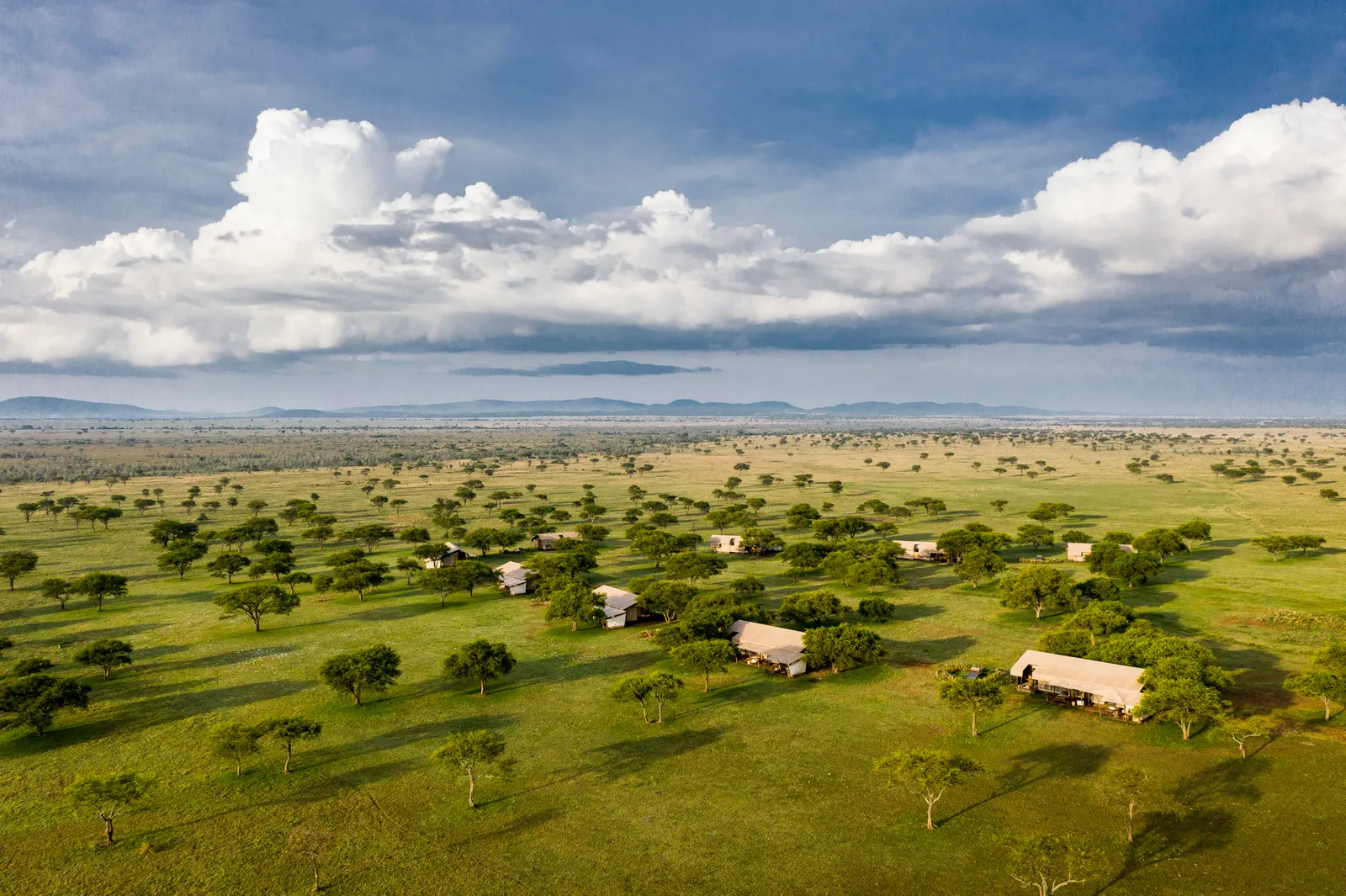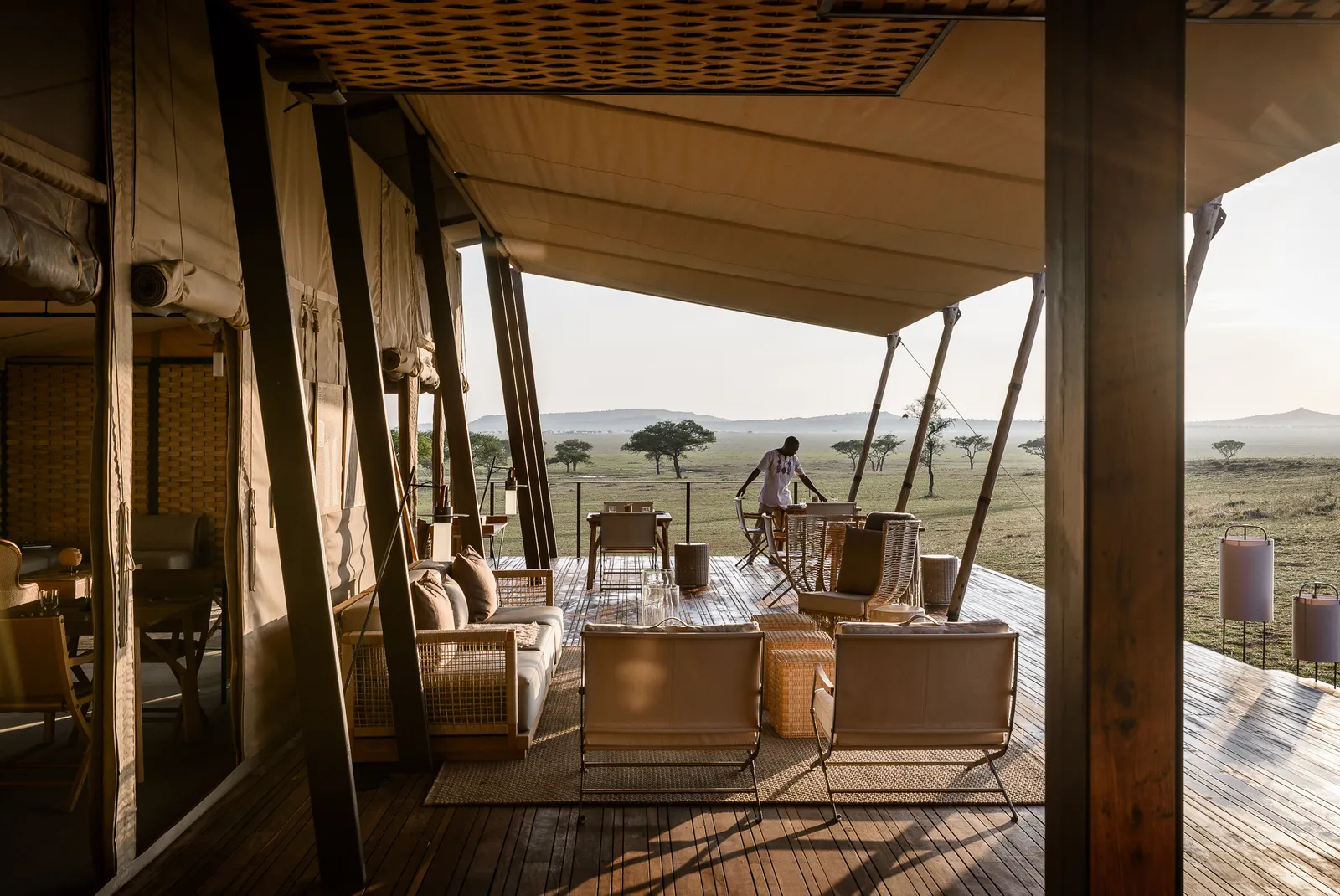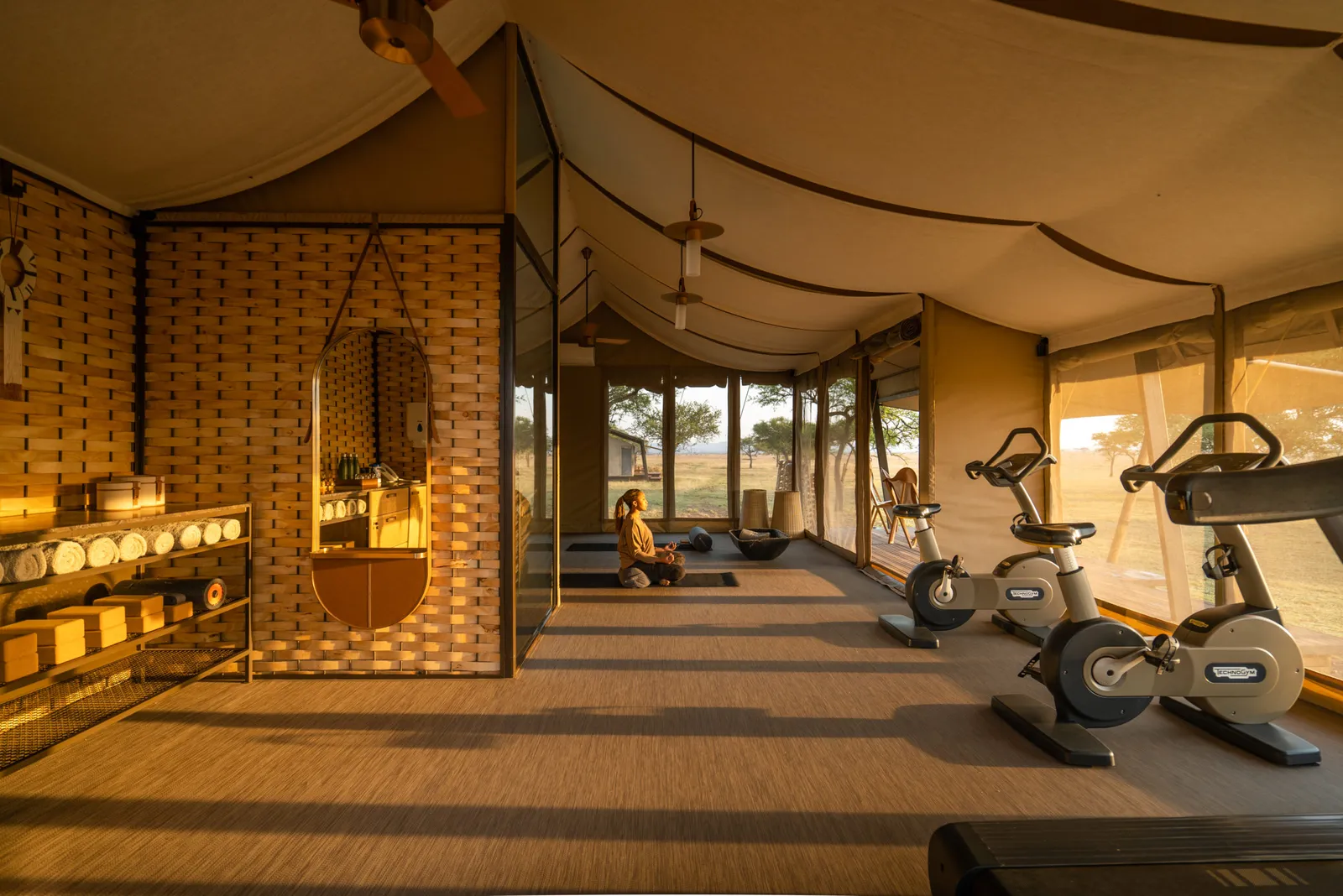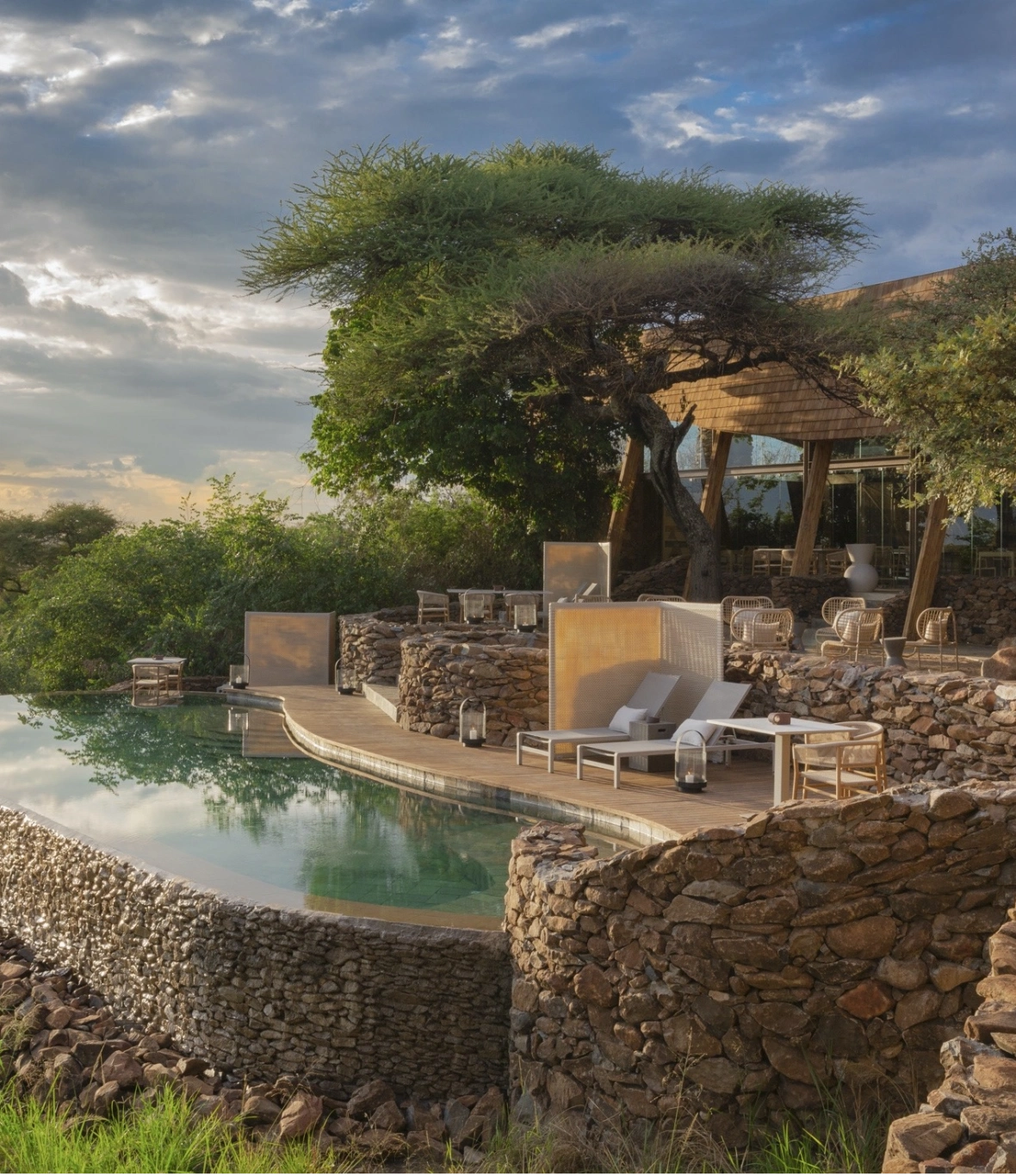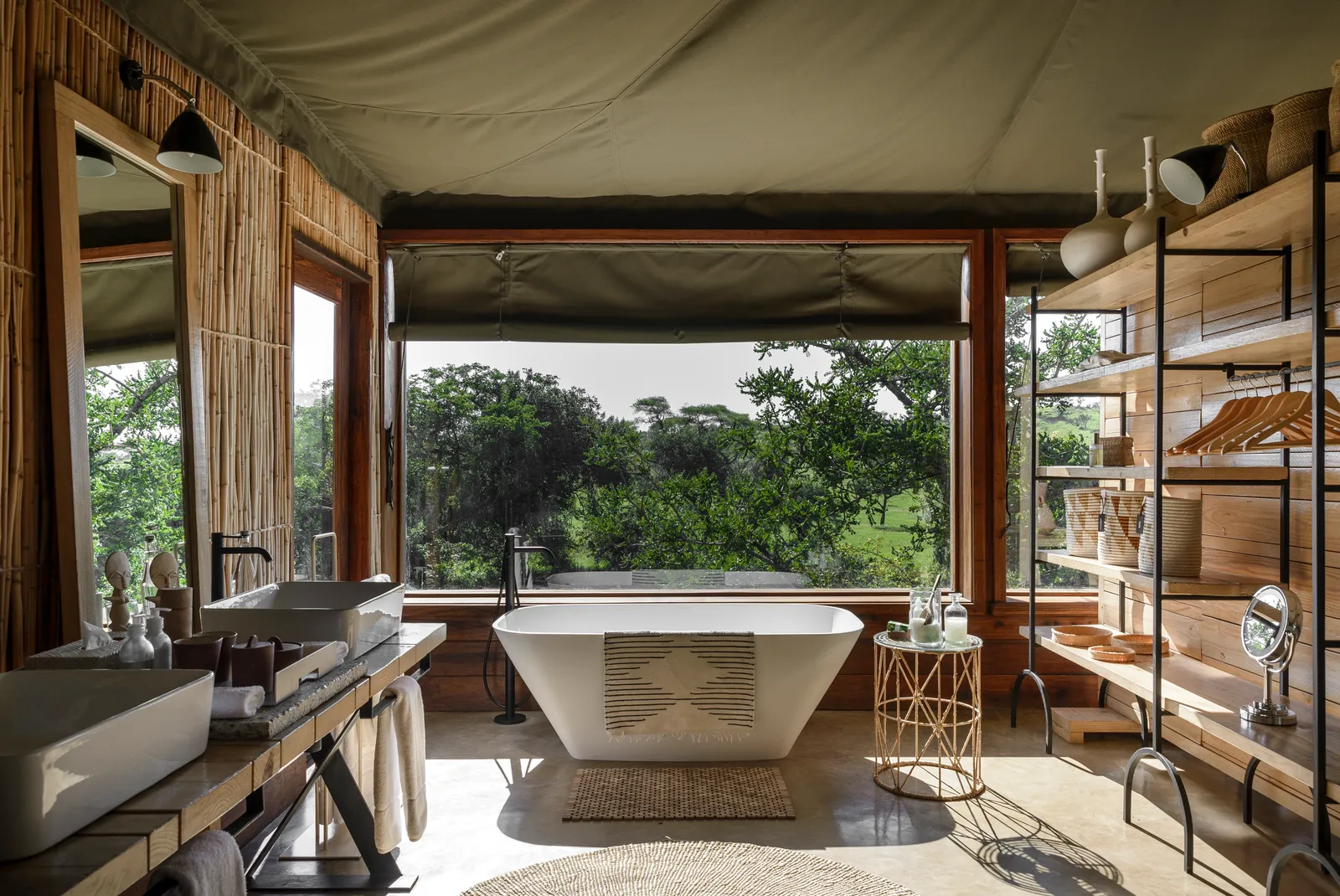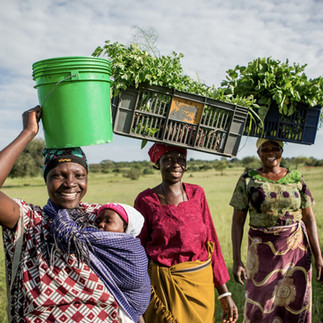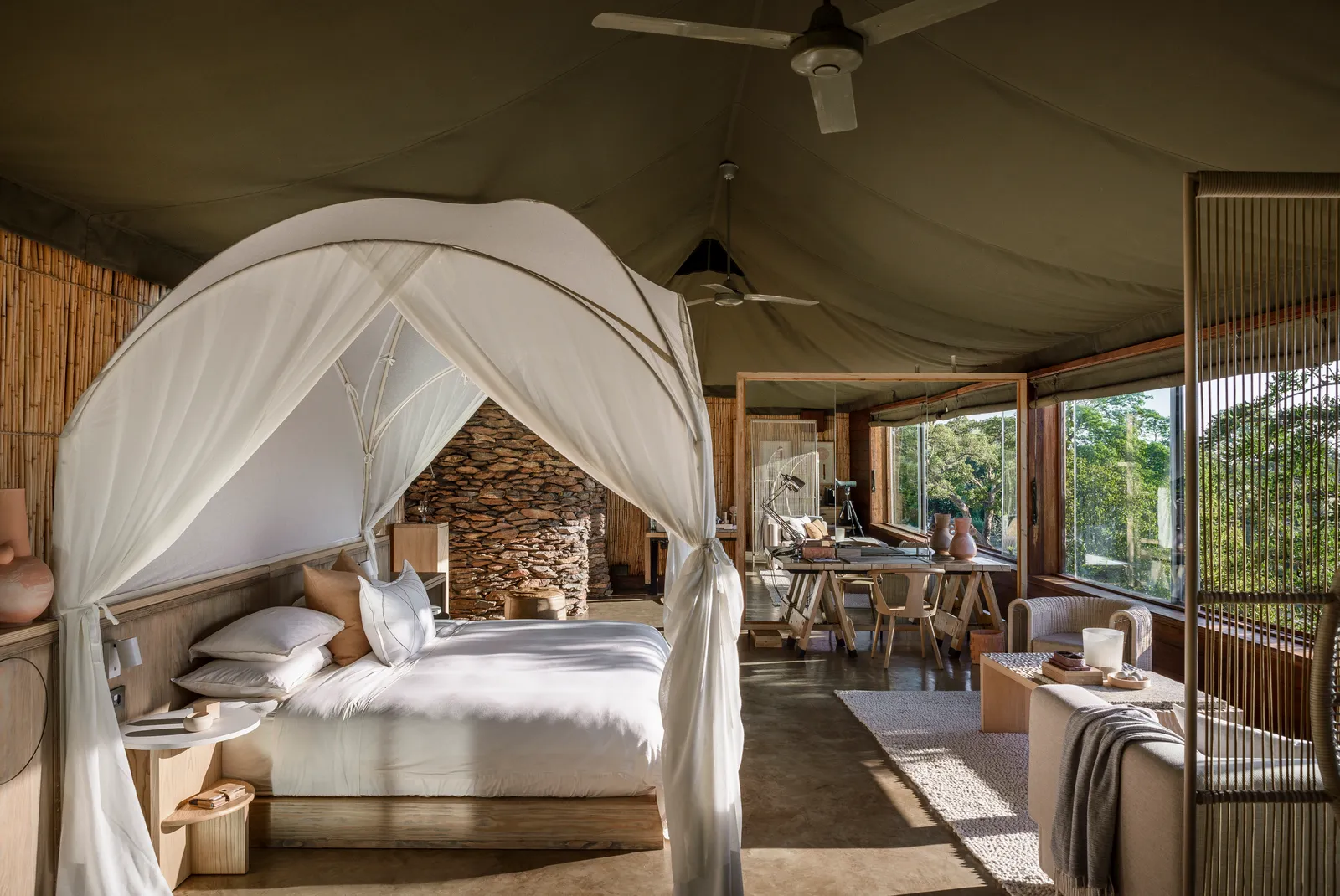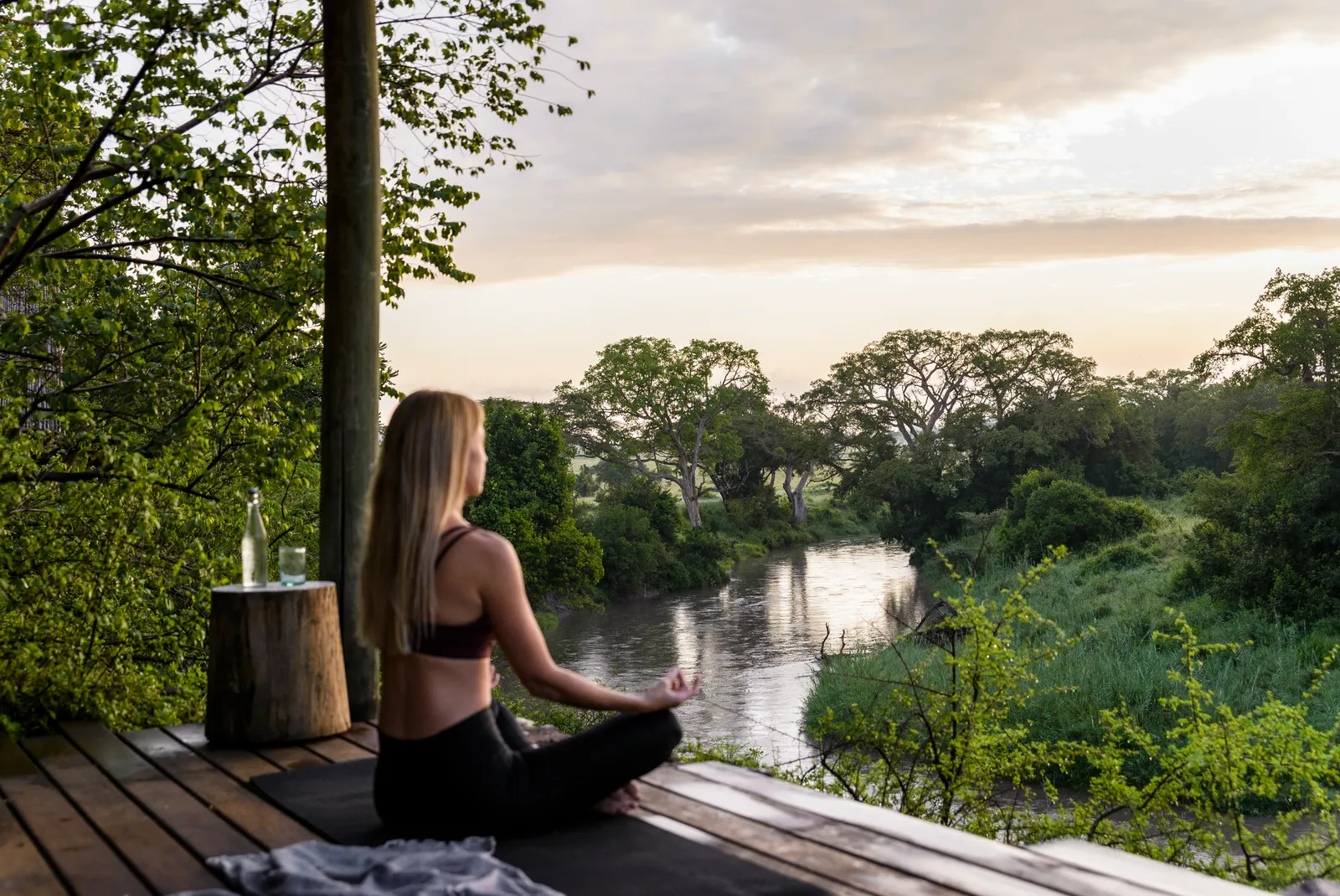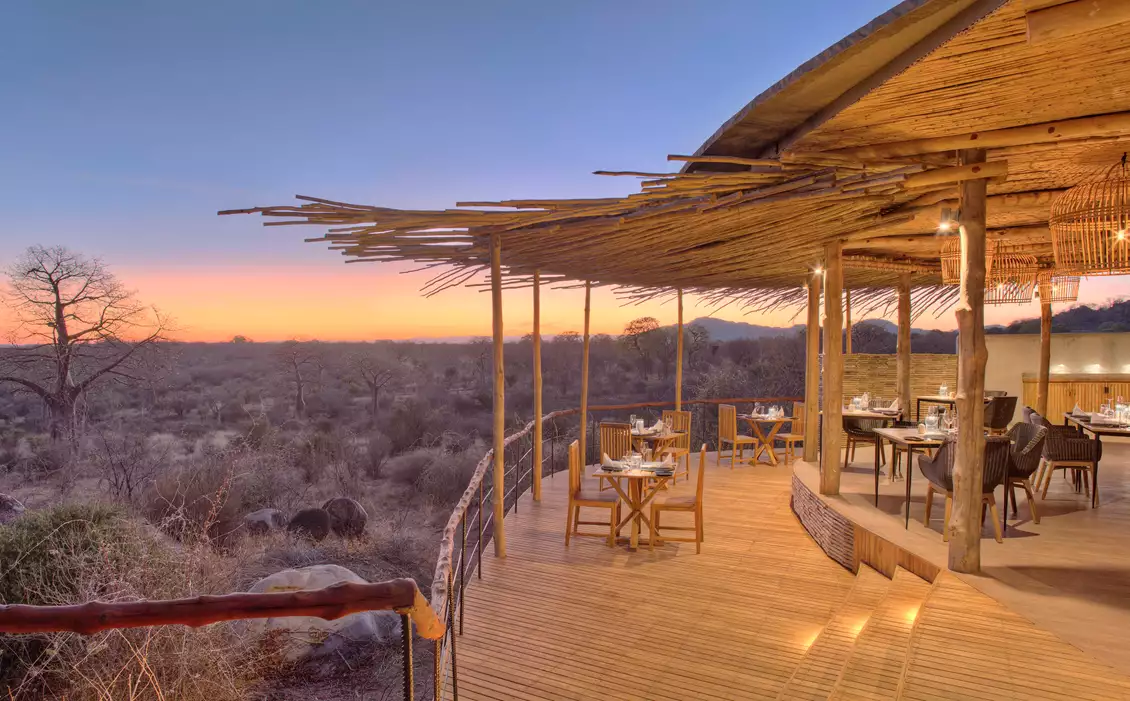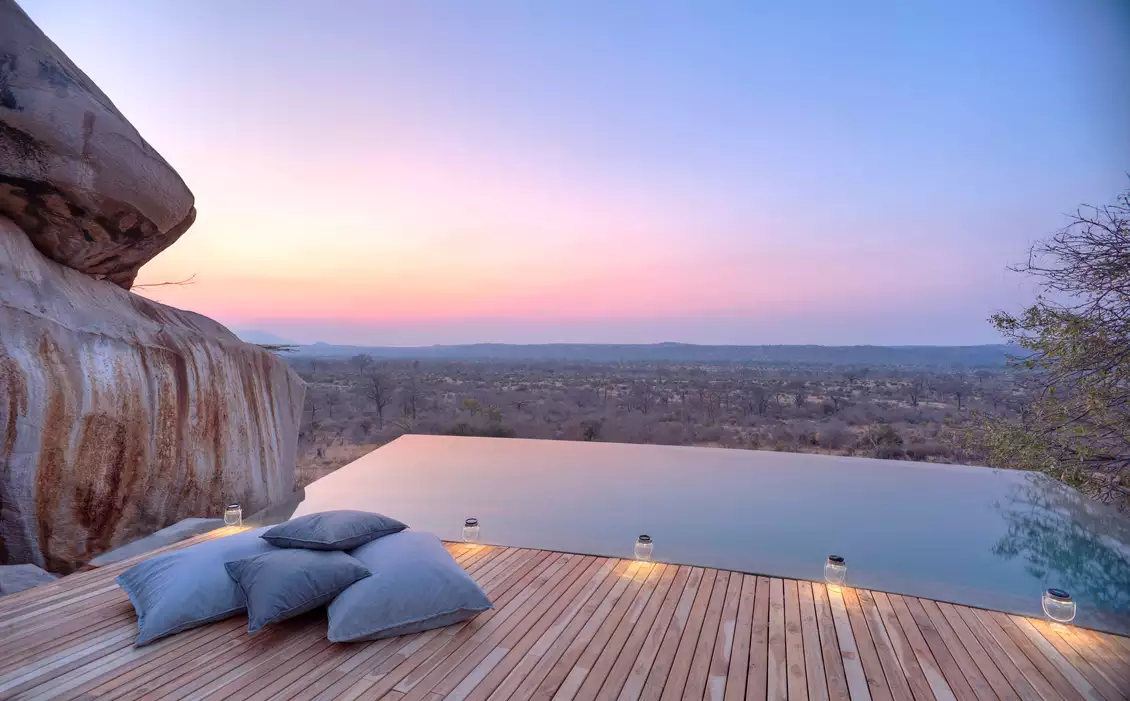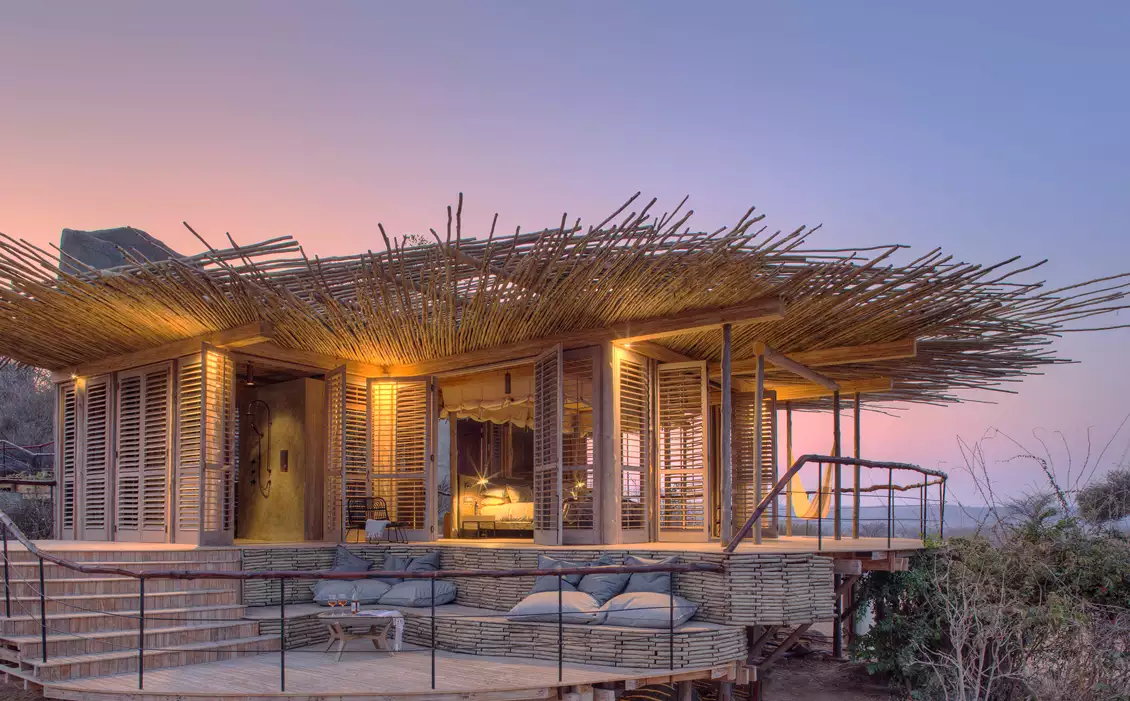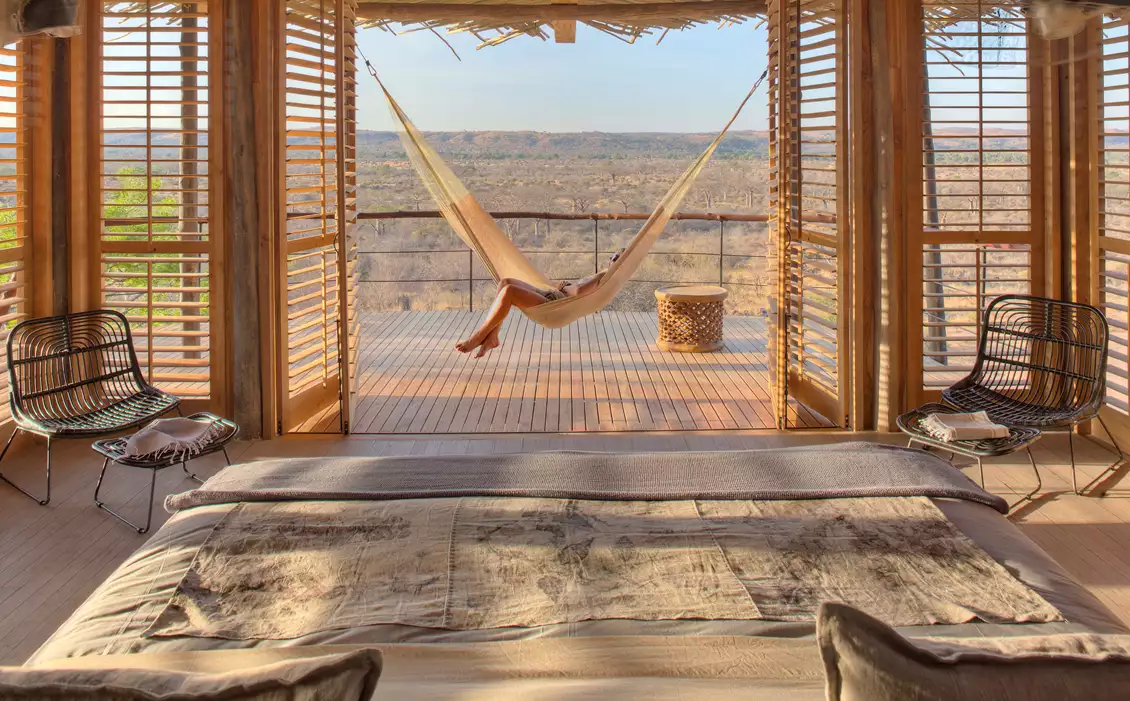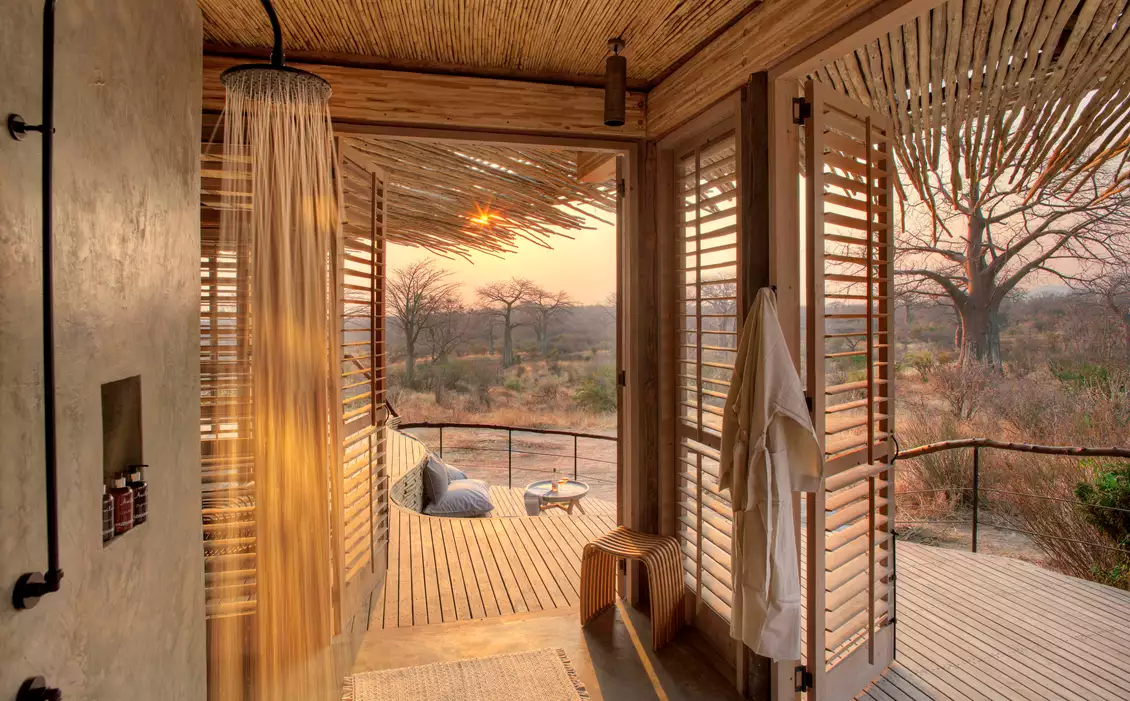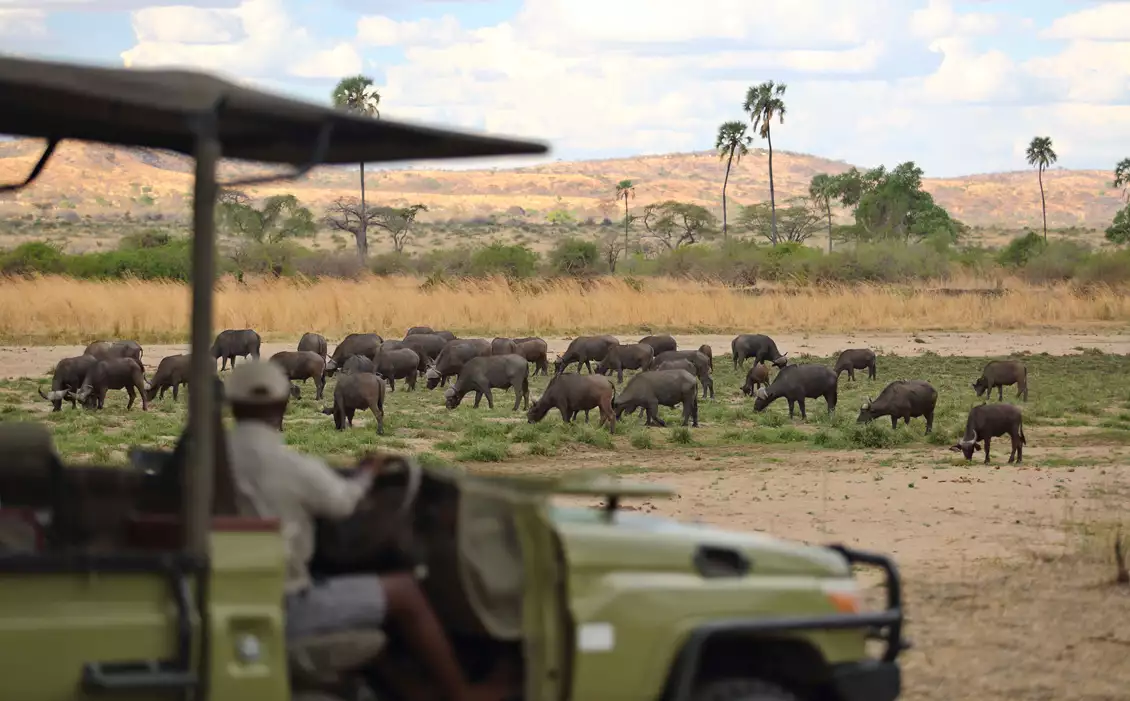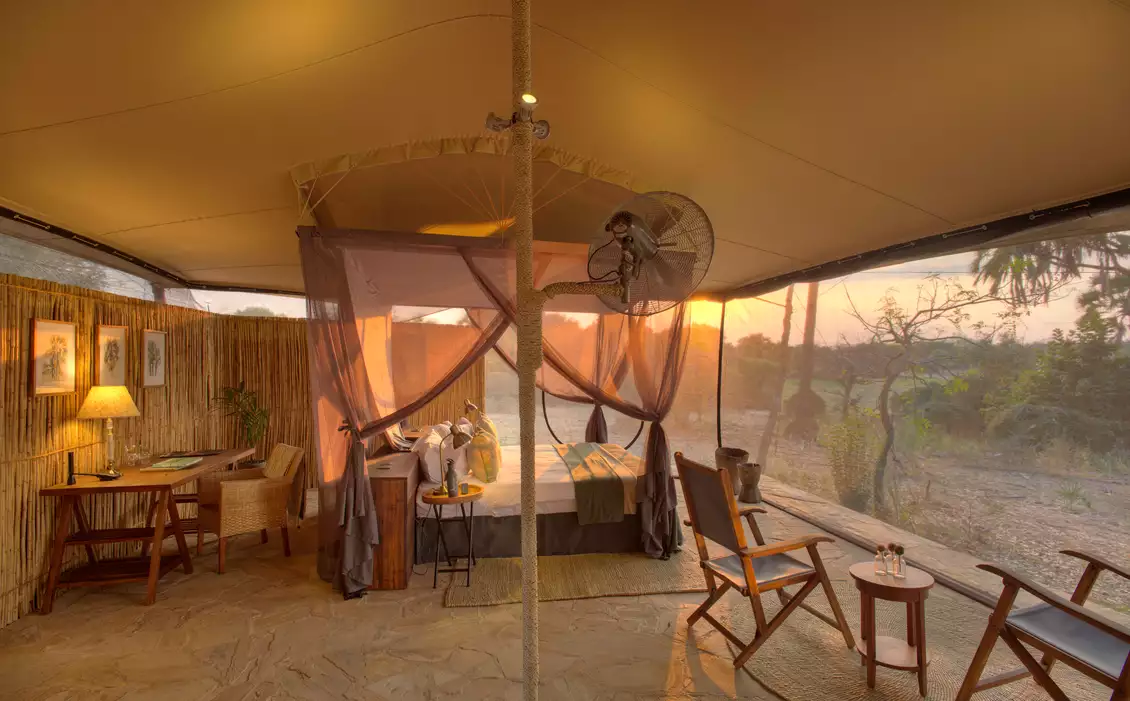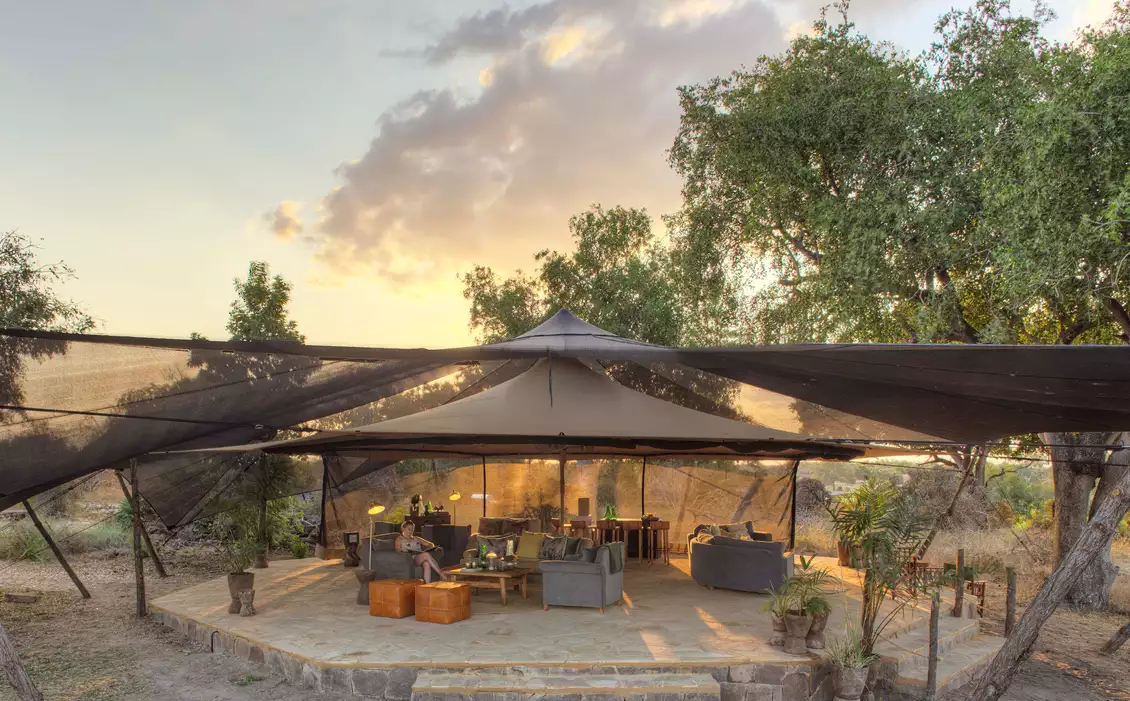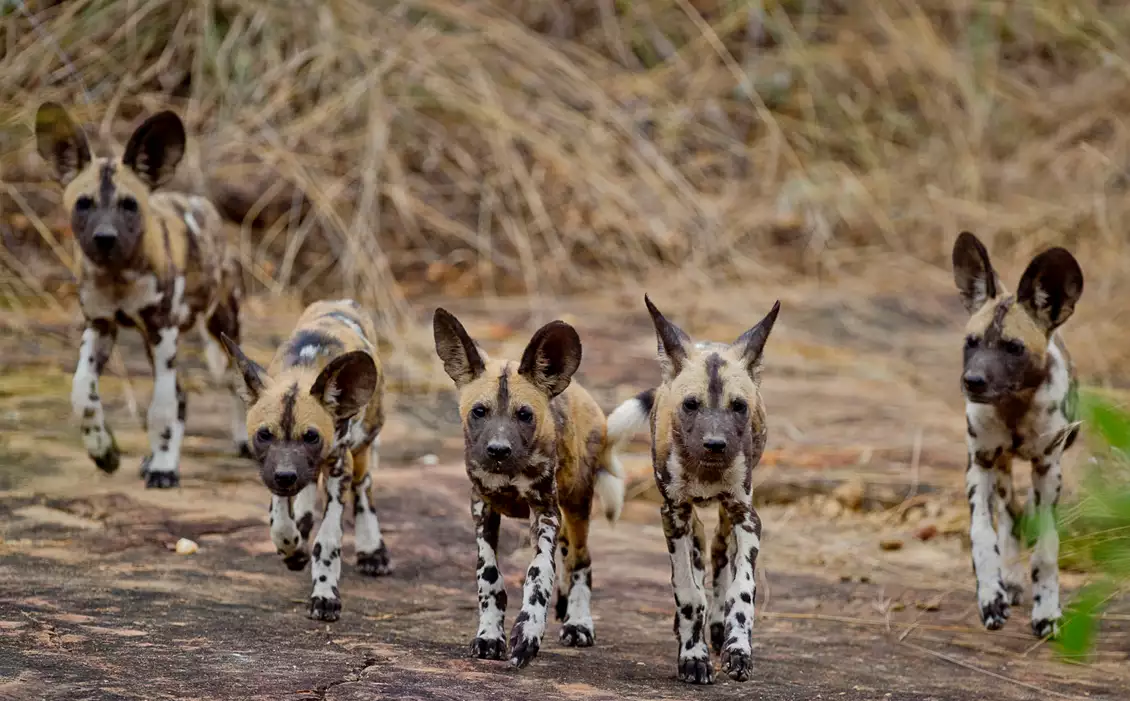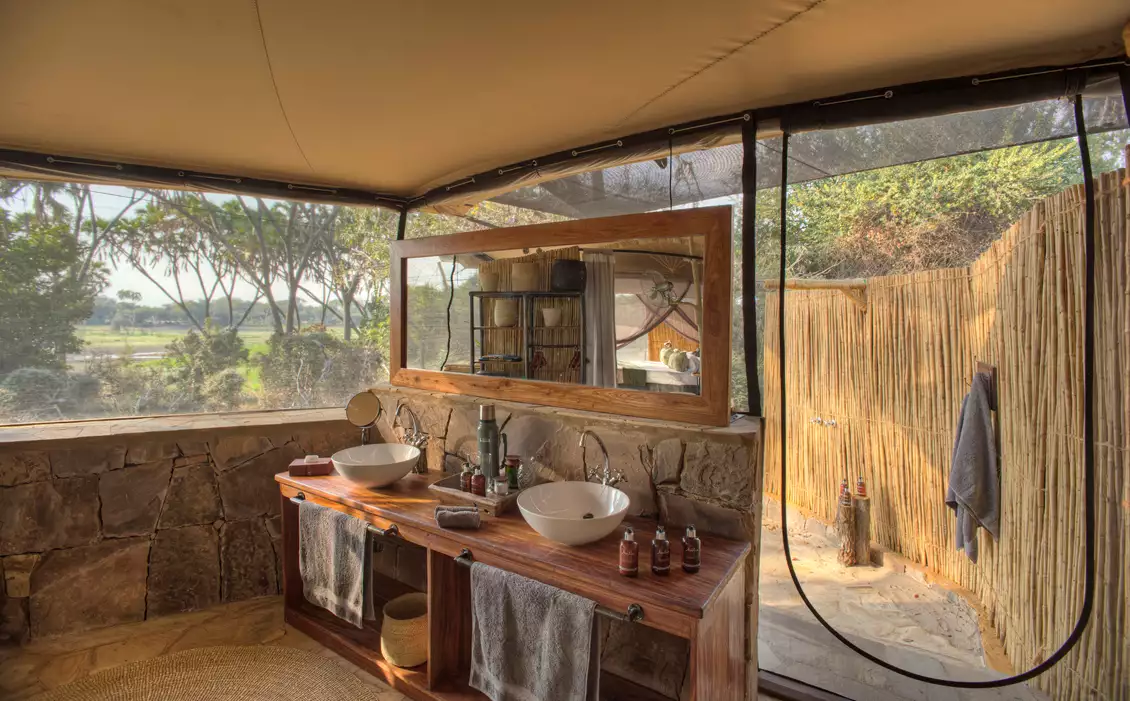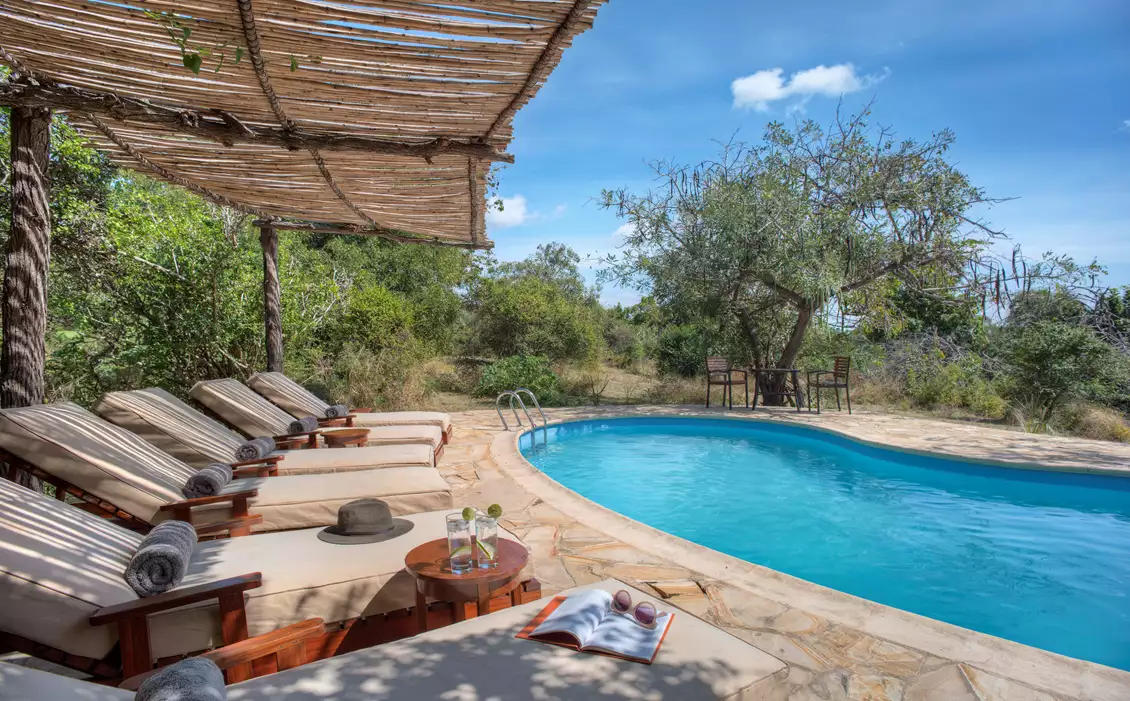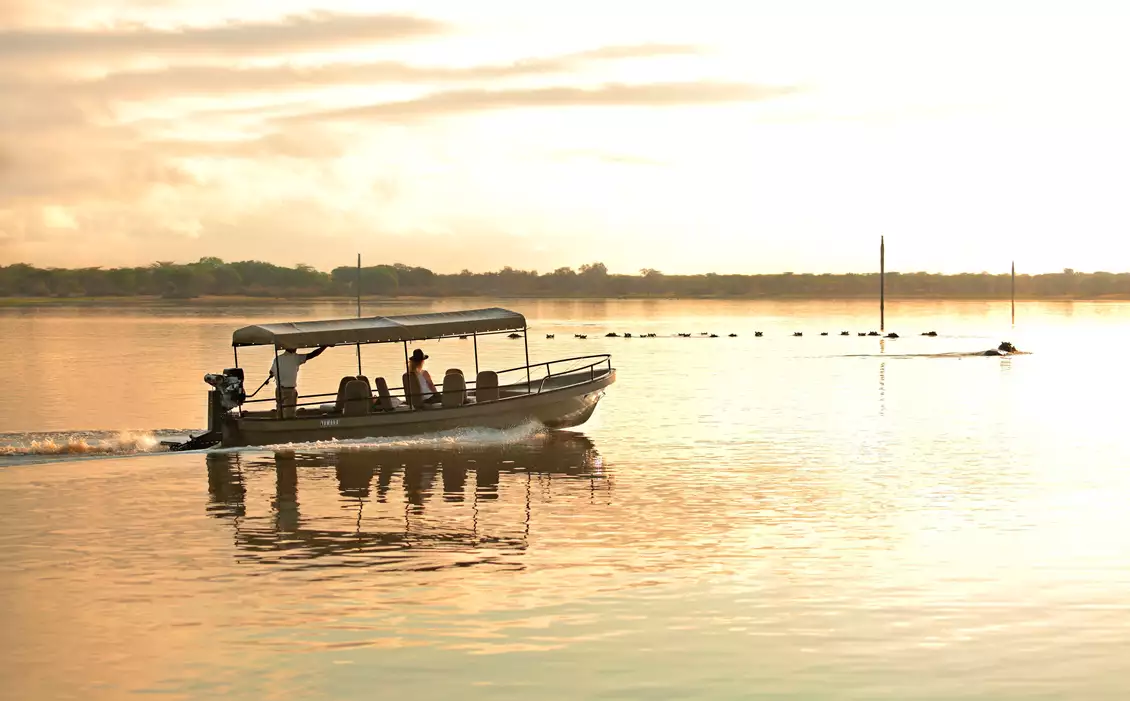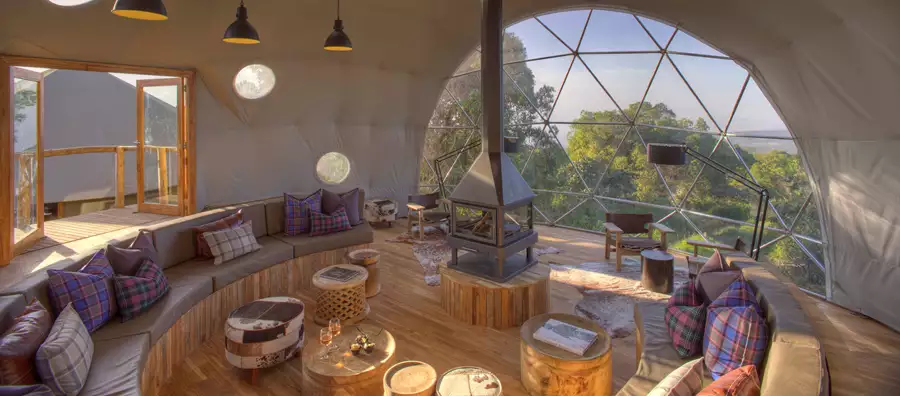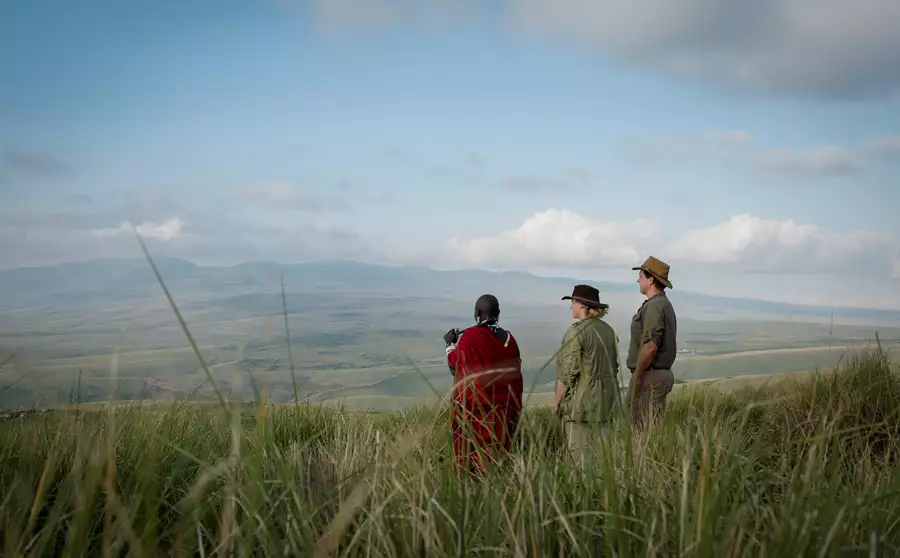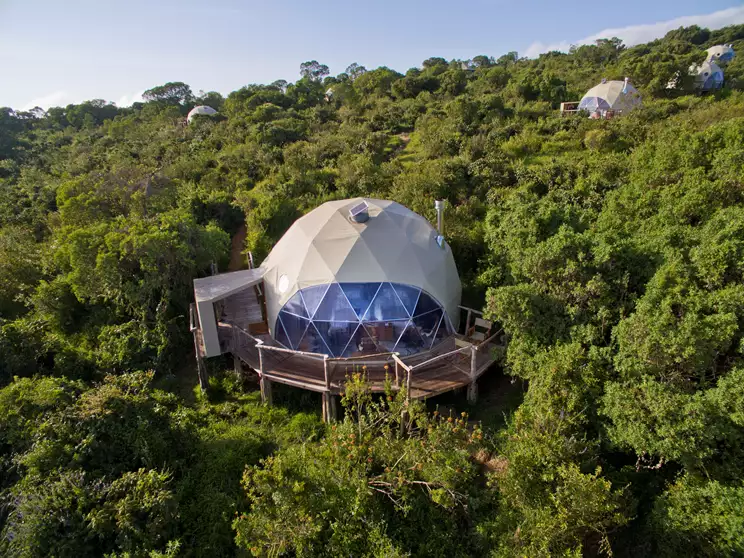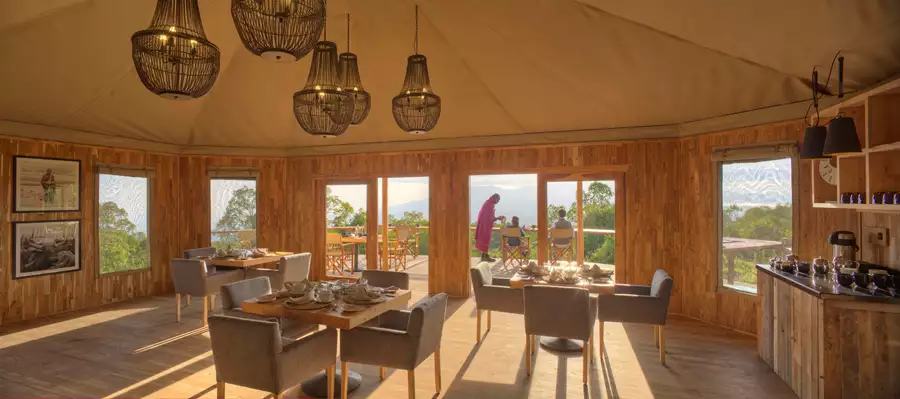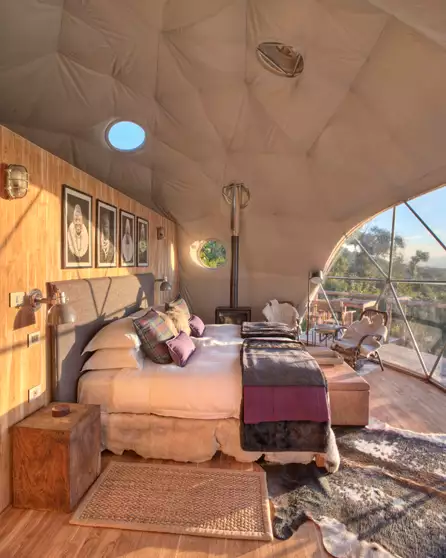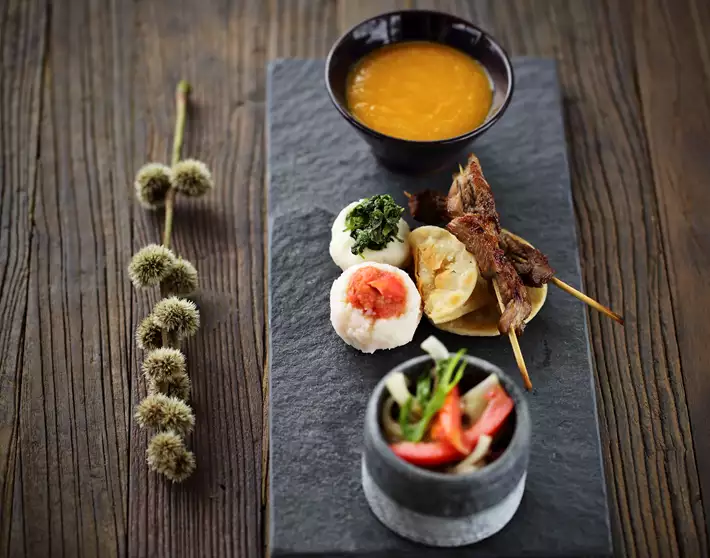The 12 Best Luxury Safari Lodges in Tanzania
- Craig Howes
- Sep 18, 2023
- 9 min read
Updated: Oct 25, 2023
Searching for the best luxury safari lodges in Tanzania? This East African gem isn't just about the Big Five. Experience the epitome of luxury in the wild with these iconic lodges.
Luxury Tanzania Safaris
Luxury Tanzanian safaris represent the pinnacle of African travel experiences, marrying the raw beauty of the continent's wilderness with unparalleled levels of comfort and service. Guests are treated to bespoke adventures in some of the world's most pristine wildlife habitats, from the expansive Serengeti plains to the stunning Ngorongoro Crater. What truly sets these luxury expeditions apart is the meticulous attention to detail: opulent tented camps and lodges nestled in prime locations, gourmet meals crafted from local ingredients, and personalised game drives with expert guides. The harmonious blend of nature's majesty and refined indulgence makes luxury Tanzanian safaris an unforgettable journey for discerning travellers.

Which Tanzania Safari is Best?
The Northern Safari Circuit ranks as the top choice among Tanzania's safari options, encompassing iconic sites like the Serengeti, Ngorongoro, Lake Manyara, Tarangire, and even the majestic Kilimanjaro. Additionally, for those inclined towards coastal beauty, Tanzania's shoreline and islands, notably Zanzibar, offer spectacular and easily reachable beaches.

How much does a safari cost in Tanzania?
Tanzania stands out as one of the pricier safari options in Africa. Those on a tight budget might find options starting at $150 daily per individual. In contrast, luxury seekers should be prepared to shell out upwards of $1,000 per person each day. For those looking at a balanced experience, expect to invest between $300 and $500 daily per individual.
How many days is enough for Tanzania Safari?
For a brief immersion into Tanzania's wildlife, a span of 3 to 5 days is advisable, allowing travellers to explore a selection of national parks. Those intent on experiencing the premier reserves, such as the Serengeti, Ngororongoro, and Tarangire, should earmark a more extended period of 6 to 8 days.
Best Luxury Safari Tanzania
Sayari Camp, Northern Serengeti National Park
Visiting the Sayari Camp is truly a magical experience. Nestled deep within the heart of the Northern Serengeti, this camp flawlessly merges luxury with nature. From my tented suite, I had breathtaking views of the vast savannah, and the frequent visits by wandering wildlife just beyond my veranda were nothing short of mesmerizing. The sunsets here, painted with hues of orange and purple, were like watching a live masterpiece unfold.
The staff at Sayari Camp went above and beyond to make my stay memorable. Each game drive with their experienced guides was an adventure, especially tracking the Great Migration, which was a sight I'll cherish forever. The meals were exquisite, combining local flavours with international dishes, and dining under the African stars was an experience in itself. It's not just a camp; Sayari offers an immersive journey into the wild, with all the comforts you could wish for.
Unique for: Optimal views of the Great Migration's Mara River crossings.
Located in the mesmerizing Northern Serengeti, Sayari Camp is a top pick for those eager to witness the unparalleled spectacle of the Great Migration.
Sayari Camp is Great for
Walking Safaris
Photography Safaris
Mwiba Lodge, Arugusinyai River
Mwiba Lodge, overlooking the Arugusinyai River, felt like a dream. The harmony of cultural experiences with traditional safaris was the highlight of my trip. The landscape around the lodge, dotted with age-old baobabs, offered an authentic African feel. Their private wildlife reserve ensured close encounters with wildlife, making every moment special.
Unique for: A harmonious blend of cultural and traditional safaris. Perched overlooking a rocky gorge, Mwiba Lodge delivers a luxurious retreat in the heart of a private wildlife reserve.
Nyasi Migrational Camp, Serengeti National Park
The mobile nature of Nyasi Migrational Camp is its most enchanting feature. Tracking the Great Migration from a strategic location was a thrilling experience. The camp moved with the rhythm of the wildlife, allowing for diverse views every morning. The staff's commitment to providing fresh perspectives and intimate wildlife experiences was outstanding.
Unique for: Its mobile nature, following the Great Migration's rhythm. Experience wildlife like never before with Nyasi Migrational Camp's shifting locations, tailored to the herds' movements.
Sabora Tented Camp, Serengeti Plains
Staying at Sabora Tented Camp was like travelling back in time. The 1920s safari ambience combined with modern amenities created a unique atmosphere. The open Serengeti plains stretched infinitely, and evenings by the campfire under the African sky were truly magical. Every detail here spoke of luxury and nostalgia.
Unique for: Its evocative 1920s safari ambience. For those yearning for nostalgia without compromising luxury, Sabora Tented Camp is your go-to.
Faru Faru, Grumeti Reserves
Set in the Grumeti Reserves, Faru Faru Lodge exudes luxury. The contemporary design blends effortlessly with the surroundings, offering both comfort and an authentic wilderness experience. The infinity pool overlooking the watering hole was a favorite spot, allowing me to view animals as they came for a drink.
Unique for: A blend of intimacy and contemporary design amidst the wild.
Nestled in Grumeti Reserves, Faru Faru provides an up-close experience of Tanzania's raw beauty.
Greystoke Mahale, Lake Tanganyika
Nestled by Lake Tanganyika, Greystoke Mahale was an off-the-beaten-path experience. The chimp-tracking adventures were the highlight of my stay. Observing these magnificent creatures in their natural habitat was surreal. The camp's remote setting and the lake's pristine beaches offered serenity like no other.
Unique for: Chimpanzee tracking by Lake Tanganyika's pristine shores. Venture off the beaten path with Greystoke Mahale's remote, chimp-centric escapades (Chimpanzee Trekking).
Siwandu, Selous Game Reserve
Siwandu in the Selous Game Reserve was a revelation. Their diverse safaris, both on land and along the Rufiji River, provided unparalleled wildlife encounters. The tented accommodations, overlooking the water, ensured that I was constantly in touch with nature. Each dawn brought sounds of the wild, setting the tone for the day.
Unique for: Thrilling land and water-based safaris on the Rufiji River.
Siwandu showcases the diverse ecosystem of Selous, making every safari a distinct adventure
Jongomero, Ruaha National Park
Jongomero in Ruaha National Park was the epitome of secluded luxury. Nestled in a remote region, it felt like I had the wilderness all to myself. The vast landscapes, combined with the luxury of the camp, created a unique safari experience. The roaring lions at night and the birdsong at dawn remain etched in my memory.
Unique for: Offering secluded wilderness experiences.
Dive deep into nature's serenity with Jongomero's untouched landscapes and luxurious solitude.
Jabali Ridge, Ruaha National Park
Jabali Ridge stands as a testament to architectural brilliance amidst the wild. The panoramic wildlife views from the lodge were mesmerizing, and the modern amenities offered every comfort I desired. The spa treatments after a long game drive were rejuvenating. The entire setting was a perfect blend of luxury and wilderness.
Unique for: Modern architectural marvels with panoramic wildlife views.
Jabali Ridge is where modern luxury meets traditional Tanzanian safaris.
Roho ya Selous, Selous Game Reserve
In the heart of the Selous Game Reserve, Roho ya Selous was a multifaceted treat. The diverse range of safaris, especially the boat trips on the Rufiji River, provided a fresh perspective on the African wilderness. The camp's design, with its open sides, brought the outside in, allowing nature to be the backdrop of my stay.
Unique for: A diverse mix of land safaris and Rufiji River boat trips.
Embrace the heart of Selous with Roho ya Selous's multifaceted safari offerings
Gibbs Farm, Ngorongoro Crater
Gibbs Farm, with its rich history, was a refreshing break from traditional safaris. Located near the Ngorongoro Crater on an old coffee estate, the verdant surroundings were rejuvenating. The farm-to-table meals were delightful, and the cultural interactions added depth to my Tanzanian experience.
Unique for: A cultural retreat on an old coffee estate. Step back in time and unwind with Gibbs Farm's rich history and verdant surroundings
The Highlands, Ngorongoro Crater
Elevated both in luxury and location, The Highlands near the Ngorongoro Crater was unlike any other. The unique dome-shaped accommodations offered both warmth and a panoramic view of the surroundings. Set amidst dense forests, the camp provided a unique vantage point for observing the area's rich biodiversity.
Unique for: Dome-shaped accommodations in a cool, elevated setting. Elevate your safari experience, both in luxury and altitude, at The Highlands.
Best Luxury Tented Suits in Tanzania
Sayari Camp
Nyasi Migrational Camp
Sabora Tented Camp
Siwandu
Roho ya Selous
These tented camps or lodges offer a unique blend of luxury and immersion in nature. Tented suites typically provide an authentic safari experience while ensuring comfort, offering the ambience of traditional camping but with the luxury amenities of a top-tier resort. Always check with each lodge directly to get the latest details on their accommodations and offerings.
Luxury Tanzania Safari (East Africa)
Embarking on a Luxury Tanzania Safari is an exhilarating experience that is second to none. It is an exquisite blend of untouched wilderness, enthralling wildlife, and a touch of grandeur. From stylish tented lodges nestled amidst Tanzania's raw and captivating landscapes to bespoke safari adventures that awaken your senses, a luxury safari transcends the ordinary, taking you to the heart of Africa's most majestic and awe-inspiring regions. Whether it's soaking in the panoramic views from a hilltop lodge or tracking chimpanzees by the pristine shores of Lake Tanganyika, a Luxury Tanzania Safari Lodge offers you an immersive, up-close experience that truly embodies the spirit of Tanzania.

Serengeti National Park Facts Before You Travel
The Serengeti National Park is one of the most iconic safari destinations in the world. Before visiting, here are some key things to know:
Great Migration: The Serengeti is best known for the Great Migration, where over a million wildebeest, zebras, and various antelope species move in a continuous cycle around the park, driven by the rains and the search for fresh grass. This migration is one of nature's most spectacular events.
Vast Size: Covering approximately 14,763 square kilometres (5,700 square miles), the Serengeti is vast. Its landscapes range from open grass plains in the south to hilly, wooded grassland in the north, and forests and swamps to the west.
Biodiversity: Beyond the migrating herds, the Serengeti is home to the Big Five (lion, elephant, buffalo, leopard, and rhino) and a plethora of other species, making it an excellent location for wildlife viewing year-round.
Balloon Safaris: One of the unique experiences offered in the Serengeti is hot air balloon safaris. These early morning rides provide a bird's-eye view of the park and a unique perspective on the wildlife below.
Accommodation: The park offers a range of accommodation options, from basic campgrounds to luxury tented camps and lodges.
Park Fees: There are entrance fees for the Serengeti National Park, which go towards conservation efforts. Ensure you're aware of the daily fees and any additional costs for vehicles or guides.
Climate: The Serengeti has a temperate climate, but it can get cold in the mornings and evenings. It's recommended to bring layered clothing. There are two rainy seasons: short rains in November and December and long rains from March to May.
Tsetse Flies: Some areas, especially the western part of the park, have tsetse flies, which can give a painful bite. Wearing neutral colors can help reduce their attraction, and it's recommended to keep vehicle windows closed or use repellent in areas where they are prevalent.
Conservation: The Serengeti is a UNESCO World Heritage Site. Efforts to conserve the unique ecosystem and its vast array of wildlife are paramount. Respect guidelines and rules set by park authorities to ensure the preservation of this magnificent place for future generations.
Connectivity: While some lodges may offer Wi-Fi, connectivity can be limited, especially in remote areas. It's a chance to unplug and immerse yourself fully in the natural world.
When planning a visit to the Serengeti, consider reaching out to a reputable safari operator. They can provide expert guidance, ensuring you get the most out of your Tanzanian adventure.
Mount Kilimanjaro
For an added adventure, consider scaling Africa's highest peak, Mount Kilimanjaro. Trekkers can choose from seven routes to the summit—each with their own unique characteristics—or opt for a leisurely nature walk around the mountain's base. With its lush rainforest and majestic alpine zone, Kilimanjaro is a rewarding challenge that will leave hikers with unforgettable memories.

Northern vs. Southern Tanzania for African Safari
Southern and Northern Tanzania offer distinct safari experiences due to their varying landscapes, wildlife, and ecosystems.
Northern Tanzania:
Serengeti National Park: Known for the Great Migration, this expansive park is a wildlife spectacle. It's characterized by vast grasslands, open plains, and a high concentration of predators.
Ngorongoro Conservation Area: Home to the Ngorongoro Crater, this area is a UNESCO World Heritage site. The crater is a self-contained ecosystem with high densities of wildlife, including the Big Five.
Lake Manyara National Park: It's known for its diverse birdlife, particularly flamingos, and the unique tree-climbing lions. The park also features a mix of forest, savannah, and lake environments.
Tarangire National Park: Famous for its large elephant population, Tarangire offers a different landscape with ancient baobab trees and a wide variety of wildlife.
Kilimanjaro: Although not a traditional safari destination, Kilimanjaro's slopes offer unique flora and fauna, and climbing the mountain is a popular adventure.
Southern Tanzania:
Selous Game Reserve: One of the largest protected areas in Africa, Selous is known for its pristine wilderness, diverse landscapes, and a variety of activities including boat safaris along the Rufiji River.
Ruaha National Park: Known for its rugged terrain and high predator concentration, Ruaha offers a more remote and wild experience. It's one of the least-visited parks in Tanzania, providing a more exclusive safari.
Mahale Mountains National Park: Nestled on the shores of Lake Tanganyika, this park is famous for chimpanzee trekking in the lush, forested mountains. It offers a unique blend of wildlife and beach experiences.
Mikumi National Park: Often referred to as the "little Serengeti", Mikumi is easily accessible from Dar es Salaam. It's known for its plains game and birdlife.
Main Differences between Northern and southern Tanzania:
Accessibility: Northern Tanzania, especially around Arusha, is more accessible and well-connected to major cities and airports. Southern Tanzania tends to be more remote and requires more effort to reach.
Crowds: Northern Tanzania, with its iconic parks like the Serengeti and Ngorongoro, tends to be more visited and can be busier, especially during the peak safari seasons. Southern parks are known for their exclusivity and lower visitor numbers.
Wilderness: Southern Tanzania offers a more pristine and untouched wilderness experience due to its lower tourist numbers. The landscapes are often more rugged and less developed.
Variety of Activities: Southern Tanzania, particularly in Selous and Ruaha, offers a wider range of activities including boat safaris and walking safaris. Northern parks typically focus on traditional game drives.
Both regions have their own unique charm and offer incredible wildlife experiences. The choice between the two largely depends on your preferences for crowd levels, specific wildlife interests, and the type of safari experience you're seeking.
chimp-tracking
In conclusion, Tanzania isn't just a wildlife haven but a luxurious retreat hub. With the best luxury safari lodges in Tanzania awaiting your arrival, every traveller is sure to find their own slice of paradise.
